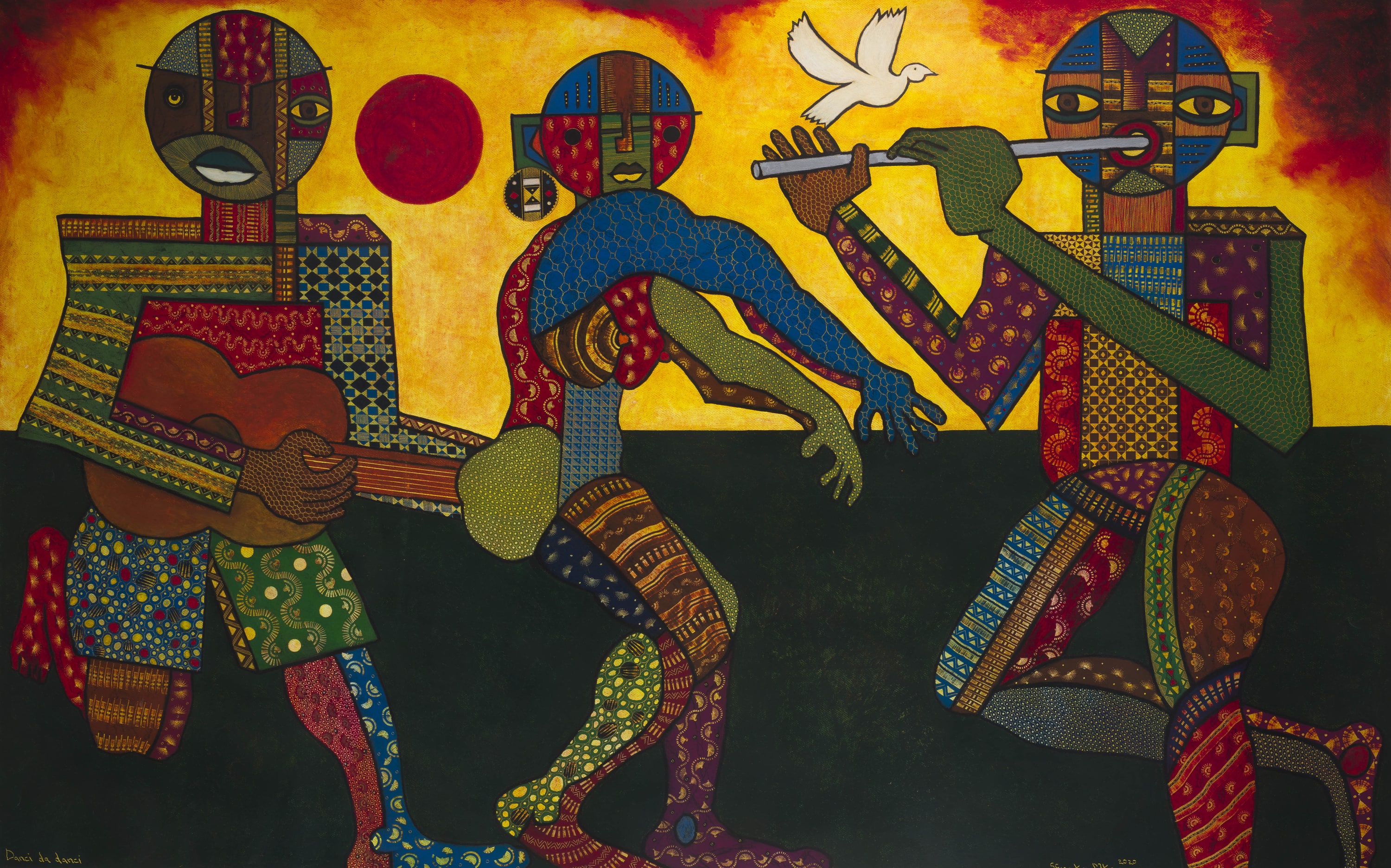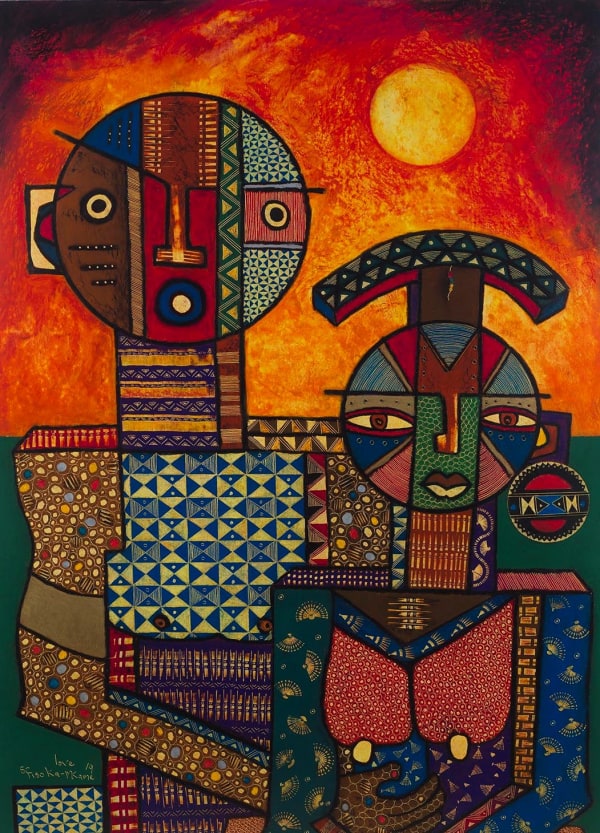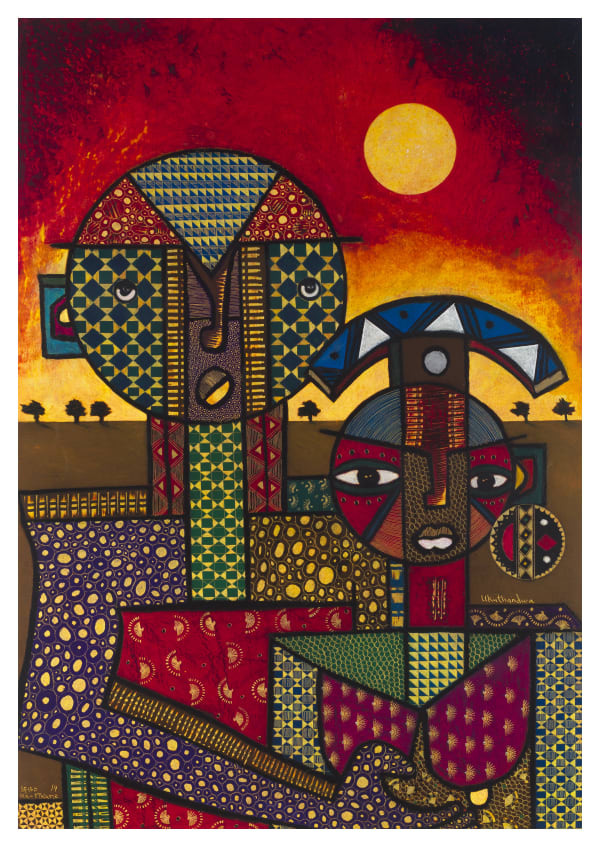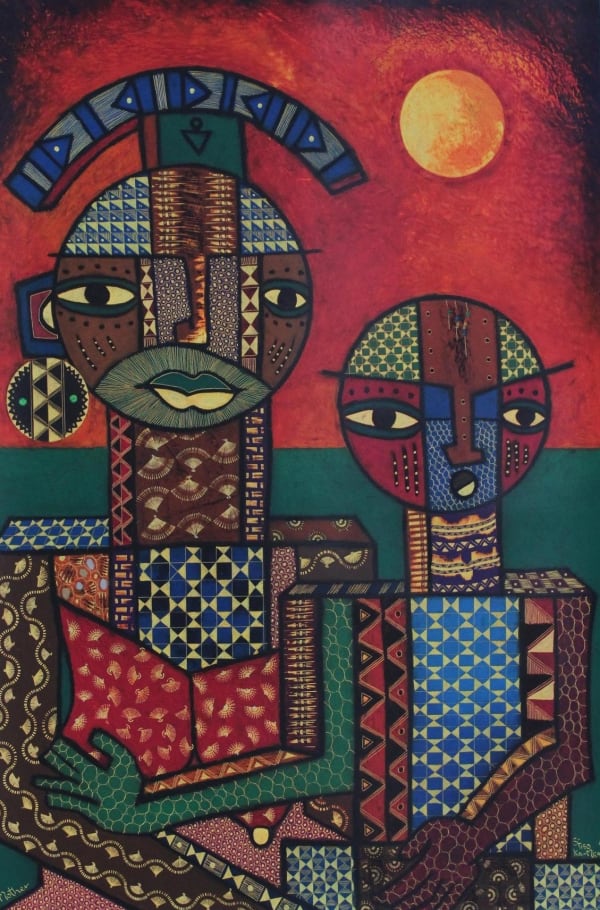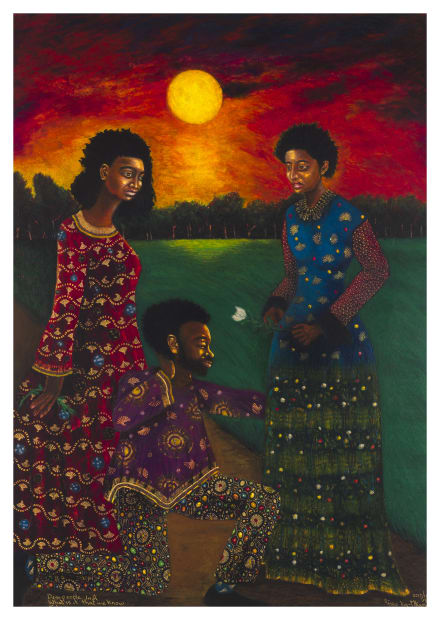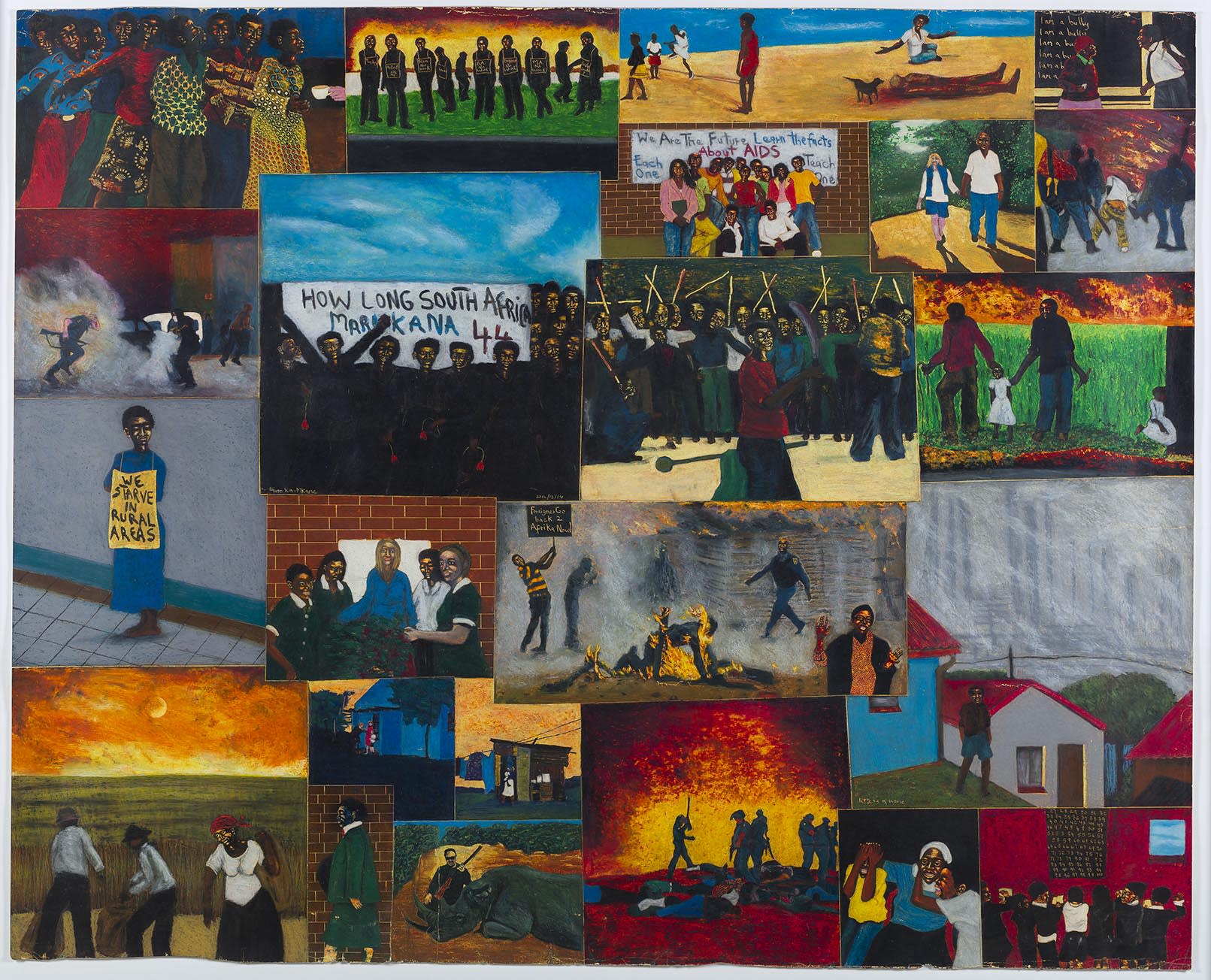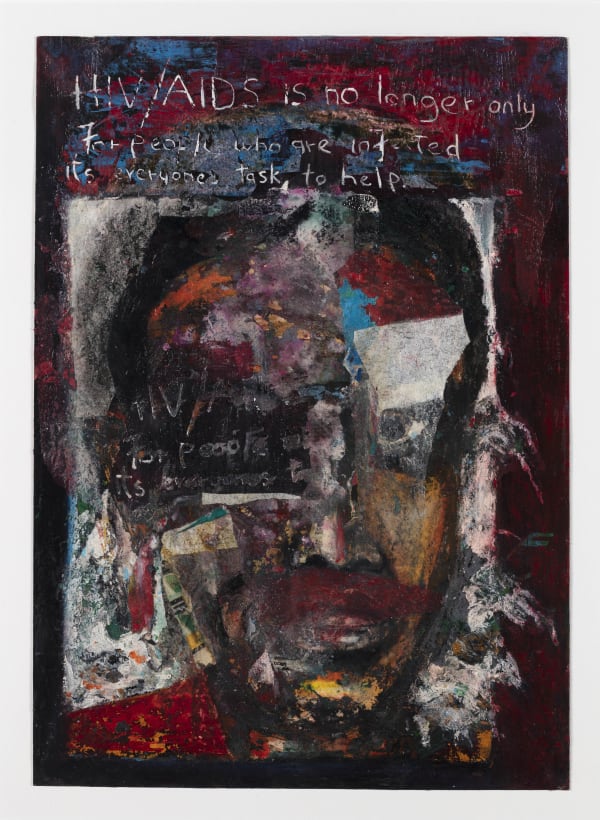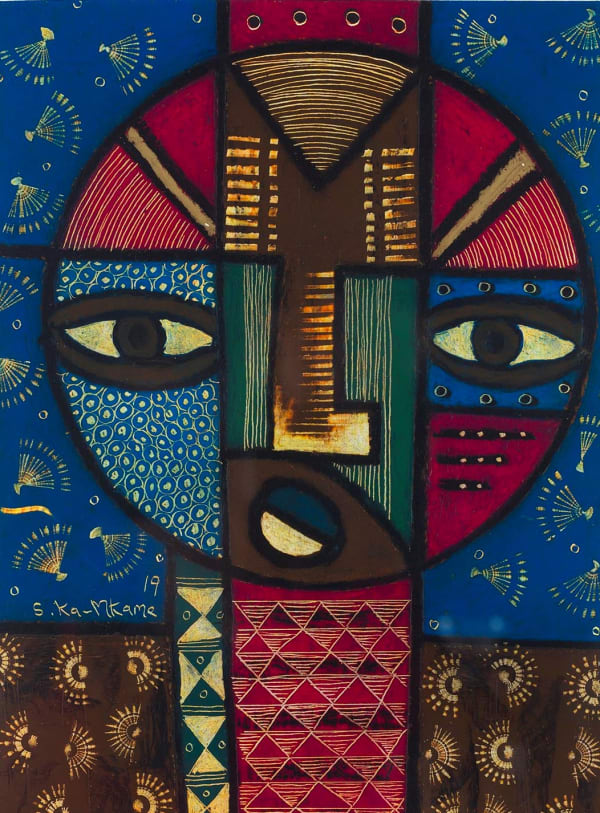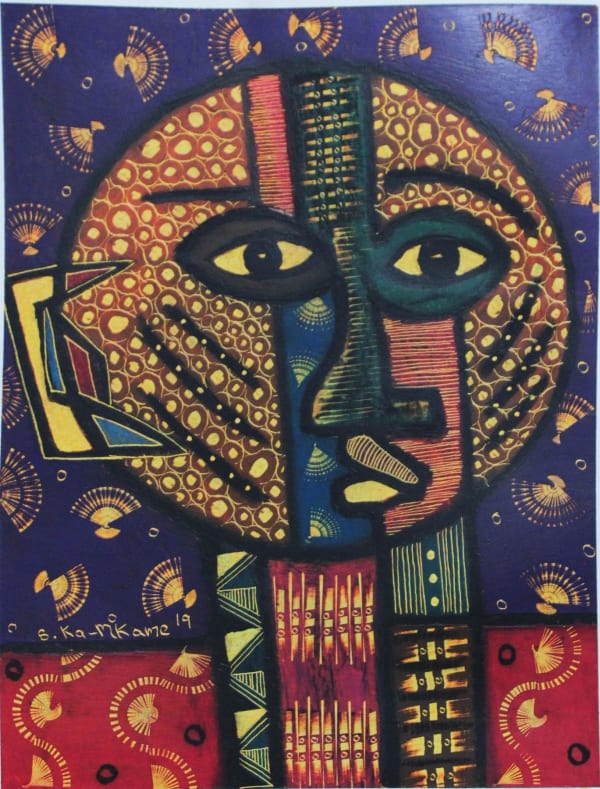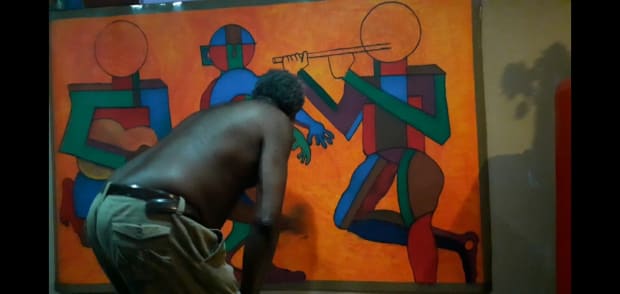-
“Homage to Africa” is Sfiso’s Ka-Mkame’s prayer for Africa and her children. It is a message of hope, a layering of the complex realities that inform our daily lives. Realities that are both beautiful and tragic, what Ben Okri would define as the “enchantment of living”. And hence as we see dance, we see murder, as we see love we see rape and as we see HIV/AIDS we see birth. The good, the bad, the Ying, the Yang, all contributing to our collective and personal stories and very existence.
Sfiso’s works recognize that Africa holds the long-forgotten memories of the dance and song of life whilst we remain bewitched by the promises of wealth defined by the acquisition of material possessions. With each scratch, Sfiso uncovers a hidden and forgotten layer, of Africa’s identity and history to present a sense of her magnificence despite the tragedy. It is fitting that ‘’Homage to Africa’’ launches on Freedom Day and runs for Africa Month.
-
About the artist
Sfiso Ka-Mkameka Mkame's African identity is truly post-democratic in the sense that it is based on inclusivity
Sfiso Ka-Mkame was born in Clermont, Durban in 1963. He studied art in the 80’s and gained fame in 1988 when he sold his ‘Letters to God’ series of drawings to the South African National Gallery in Cape Town. In 1996 he held his first solo exhibition at the BAT Centre in Durban and has exhibited extensively since then.
Sfiso was active in the United Democratic Front (UDF) and his early work reflected the political conflict, daily struggles and hardships he witnessed around him.
His work has a decorative, stylized approach that resembles African textile, demonstrating nostalgia for African symbols; a quest that became more urgent and challenging for him after South Africa’s first democratic elections in 1994. This led to his search for symbols of an African identity beyond the confines of his own region and this is reflected in his paintings.
He builds up dense layers of colour with oil pastels and then scratches patterns into the pastel to create images, symbols and designs which are often mistaken for textile.
He usually titles his works and this provides the viewer with the beginning of the story or narrative that has inspired the work.
It is the African women resplendent in magnificently coloured and patterned gowns and the representation of the kings and queens of Africa in equal importance that currently dominates his artwork, reminding one of the work of artist Gustav Klimt.
Sfiso has participated in numerous exhibitions in Africa and internationally. His works grace many important public, private and corporate collections including most of South Africa’s art museums and national galleries.
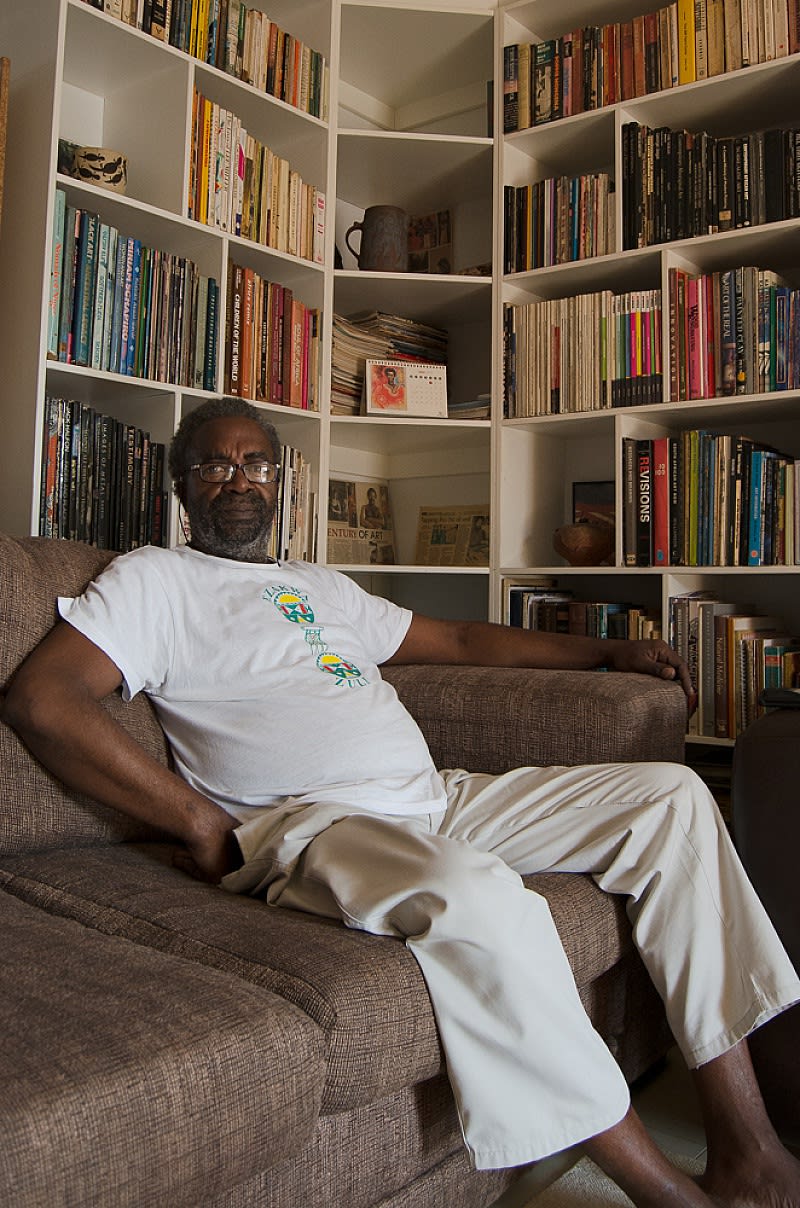
-
 Sfiso Ka-MkameDanci da danci, 2020Oil pastel on paper231 x 152 cmR 280,000.00
Sfiso Ka-MkameDanci da danci, 2020Oil pastel on paper231 x 152 cmR 280,000.00 -
The Making
Looking into Sfiso's technique -

-
The dance, chant and song of the people
-
 Sfiso Ka-MkameOde to Dr Philip Tabane and his Malombe, 2020Oil pastel on paper364 x 151 cmSold
Sfiso Ka-MkameOde to Dr Philip Tabane and his Malombe, 2020Oil pastel on paper364 x 151 cmSold -
To her and for her: The African women
-
 Sfiso Ka-MkameDear people just what is it that we know of Love, 2020Oil pastel on paper100 x 70 cmR 71,700.00
Sfiso Ka-MkameDear people just what is it that we know of Love, 2020Oil pastel on paper100 x 70 cmR 71,700.00 -
Speaking through the wound
-
 Sfiso Ka-MkameLetters to Home, 2012Oil pastel on paper139,5 x 168 cmR 198,500.01
Sfiso Ka-MkameLetters to Home, 2012Oil pastel on paper139,5 x 168 cmR 198,500.01Letters to home
In ‘Letters from Home’, Ka-Mkame adds to an important body of works created by him in the late 1980’s for which he received national and international recognition. These took the form of full colour drawings that were themselves made up of different scenes, arranged in quasi-comic book format. However, unlike comics these images did not suggest any sequential narrative. Rather each component told its own ‘story’, united by an overall theme. “Letters to God” (1988), which was bought by the South African National Gallery and appeared in several publications is probably the best known of these early works.
The artwork included in this exhibition speaks to Xenophobia, necklacing which was the practice of executing someone by placing a rubber tyre around a person’s neck and lighting it with petrol, HIV, the Marikana tragedy, poverty, and resistance.
The ‘letters’ series also speaks to the reality faced by the majority of black families in South Africa in which families were split as parents were forced to travel to cities in search of work. The only way of communicating was via letters and these artworks create a valuable, permanent archive of the challenges faced by the majority of South Africans during this period and still today.
-
-
Ancestral Spirit
-

-
-
In studio with Sfiso Ka-Mkame
-

-
“I have been told that my work is too political, but I say, my work is just what I see when I wake up in the morning.”
Homage to Africa: Sfiso Ka-Mkame
Past viewing_room

